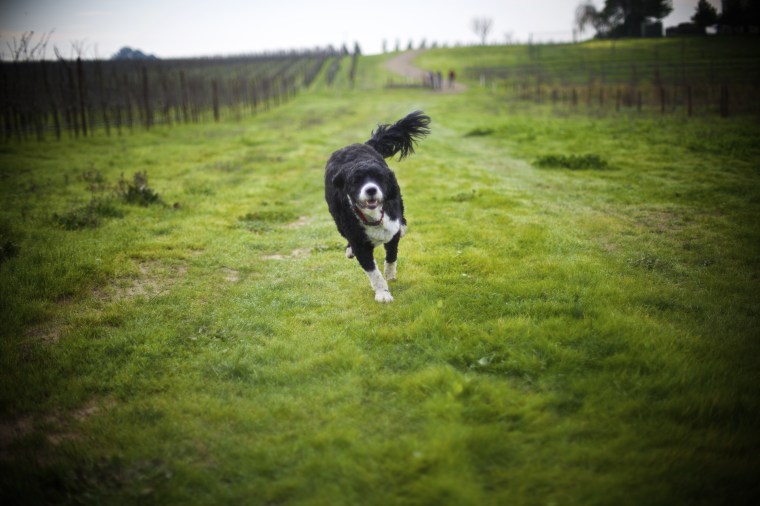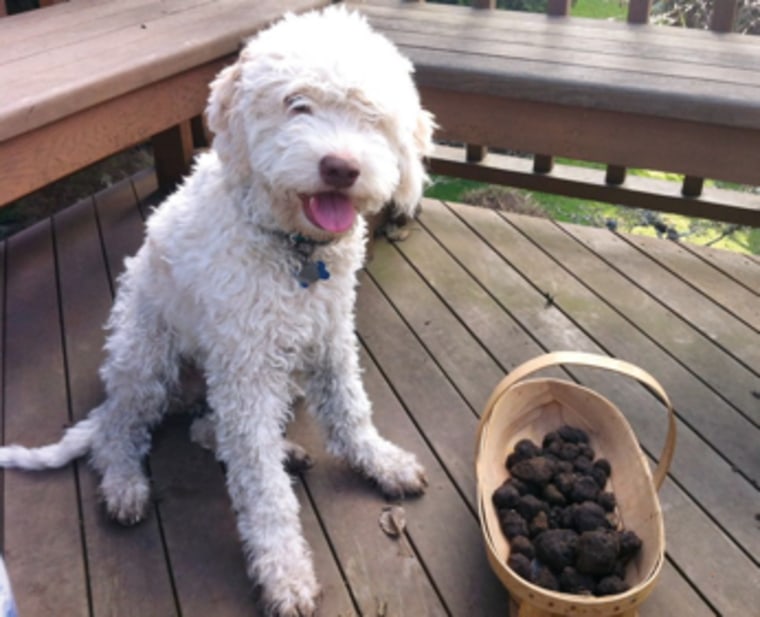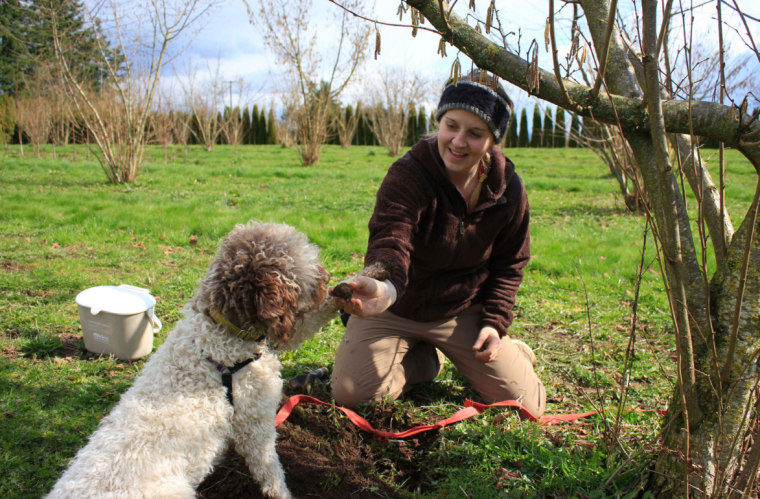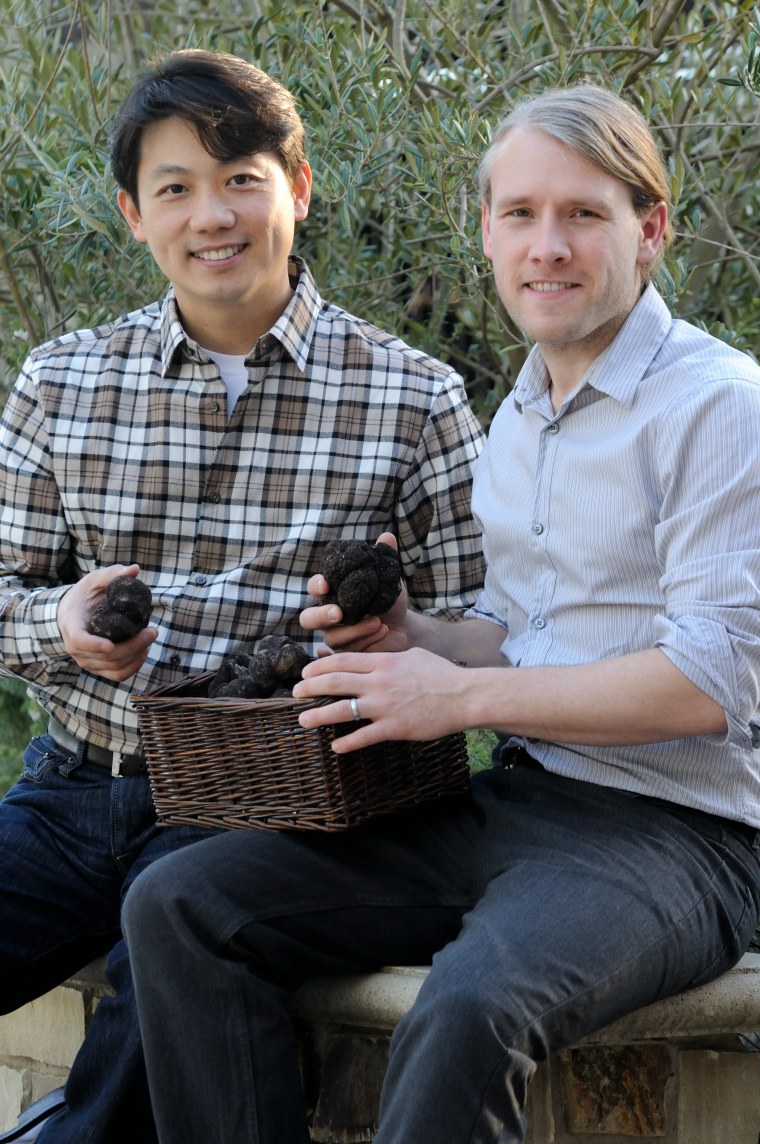Robert Chang was in his late 30s when he decided to forgo the safety of a promising career in Silicon Valley for a fascination with fungi and dirt.
It all began in 2003 when Chang was in Germany to work and learn German as a fellow of the year-long Robert Bosch Foundation Fellowship Program for mid-career professionals. One night, while out in Munich, Chang sat down for dinner at an Italian bistro. He looked over the menu and decided to order a simple dish — tagliatelle tossed in butter with fresh black truffles shaved on top.
Chang, who emigrated from Taiwan when he was 12, had heard about truffles and their earthy, somewhat garlicky flavor, but he had never eaten one. When he took that first bite at the bistro in Munich, his taste buds were tantalized.
“It was a flavor and aroma I had never had before, and I was addicted,” Chang told NBC News.
So addicted, in fact, that Chang tracked down a British scientist and truffle expert named Paul Thomas, who holds a doctorate in plant sciences, to see if truffles could also be grown in the U.S. Around 2006, the two men hit it off after a meeting in a London pub fueled by pitchers of beers. One year later, Chang became Thomas’ partner to start and run the American Truffle Company.
But Chang’s career change garnered mixed reaction from his parents.
“My mother was very encouraging, very supportive,” Chang, who is now 45, recalled. “My father was a bit more traditional so he was wondering if I could support a family with something that wasn’t a corporate kind of job.”
Over the last several years, Chang has proven he can. The American Truffle Company, which partners with people willing to invest in and grow truffle orchards in North America, has been so successful that it’s actually trying to minimize its number of clients, Chang said. Currently, the company has between 10 and 20 partners each with substantial acreage throughout the U.S. and Canada, from which it takes less than a third of the gross truffle revenue once the truffles begin producing.
Chang added that the American Truffle Company doesn’t operate the orchards; that is left to the owners. But the company does provide the knowledge and science to grow two types of truffles: the black winter, which sells for up to $1,200 a pound, and the black summer, which goes for $300 to $700 a pound.
Those market prices are as enticing to many prospective orchard owners as the truffles are to the foodies who fawn over them. But to establish a truffle orchard, investors will have to fork over between $15,000 and $20,000 per acre of land, Chang said. That covers adjusting and testing the soil, purchasing the hazelnut and oak trees inoculated with the truffle organism, and installing an irrigation system.
Then the waiting begins — for about five years before the truffles can be harvested. That’s when the trained dogs move in, scouring the orchards to sniff out the fungus, which produces a scent when it is ripe.
“The dog is a nice compact package that does this amazingly well,” Chang said.

Since founding the American Truffle Company in 2007, Chang has served as its managing director and, as he likes to call himself, its “chief truffle officer.” His masters in business administration from Stanford University, his experience in Silicon Valley’s high-tech industry, and his background in science—Chang holds bachelor’s and master’s degrees in electrical engineering from the same school—have all helped Chang run and build up the company, he said.
Working with a team of six associates, Chang juggles many responsibilities, including advising potential investors interested in operating truffle orchards, supporting existing partners, managing the nursery with trees used to grow the truffles, and planning and organizing the annual Napa Truffle Festival in January, which attracts Michelin-star chefs and serves as a conduit for truffle distribution.
Chang is equally involved on the science side as well. He has used his background, for instance, to connect scientific instruments to the Internet that monitor conditions in partner orchards in 25 countries. That data, transmitted in real-time to the American Truffle Company’s server in California, helps the company diagnose any issues that arise in the orchards.

“This is exactly the crux of our scientific advantage,” Chang explained. “It’s the largest truffle database of its kind anywhere in the world.”
Harnessing science to effectively grow a temperamental fungus beats chancing it to Mother Nature. Traditionally, truffles were often discovered by chance when scouts happened upon wild trees with the truffle organism, Chang said. But around 40 or 50 years ago, Europeans eliminated the guesswork by injecting the fungus into trees and planting them in their natural habitat of the Mediterranean region, a method that has mostly proven successful.
But try recreating that in the United States or North America, with improperly inoculated trees or in climates and conditions unsuitable for growing truffles, and the results can be abysmal, Chang said.
“In locations that do not have these European truffles natively, you can try the same approach, and the failure rate is over 95 percent,” Chang said.
Chang attributes his company’s success to science and how it is used to grow truffles, as well as to culling, analyzing, and interpreting volumes of data about partners’ orchards. But could the American Truffle Company’s drive to perfect the science behind truffle cultivation one day over-saturate the market and make truffles as commonplace as, say, mushrooms?
“It was a flavor and aroma I had never had before, and I was addicted.”
“To produce truffles at that scale would require something along the lines of 6,000 or 7,000 acres of truffle orchards, all of them producing at their peak level, in order to even approach the current level of supply and therefore influence the market price,” Chang said.
No doubt, the high prices that truffles command contribute to the mystique and hype surrounding the coveted fungus. Over the last three decades, Chang said, the price of truffles has increased by an average of 4.5 percent every year, with worldwide demand far outstripping supply. Between 80 and 100 tons of truffles—sometimes 120 tons—are produced and consumed annually, Chang estimates.
But Chang said that is not his company’s goal, adding that the American Truffle Company wants to get to the point where it has several hundred acres under management and stop there. “And therefore we’re going to keep the price where it is today,” he said.

Outside the western world, truffles also enjoy wide popularity in Asia, Chang said. As the ranks of the well-off swell in countries like Korea, Japan, China and SIngapore, so too does their taste for the finer things in life, and truffles are no exception, he said.
Chang said his company hasn’t tapped into the Asian truffle market yet since the American one is so big. “Very often Asia follows what America does, so our strategy is really to be successful in the U.S., and at that point Asia would want to be on board,” he said.
Chang attributes his professional success to a willingness to try new experiences and to following his passion. He was determined to buck the stereotype of Asian Americans entering technical fields and staying put because they’re not exposed to other disciplines, he said.
So while at Stanford, Chang didn’t just study math and science like many engineering majors; he also took classes in Middle Eastern history, finance, and Japanese. It was his burning curiosity, he said, that later pushed him to travel to Germany, to learn German, to work at a German company and, yes, to have dinner at that Italian bistro in Munich where he discovered truffles.
“My passion has always been with food,” Chang said. “Being able to see the opportunity with truffles, and having that confidence to take that first step, to get out of the corporate world and go down this entrepreneurial path where I’m passionate about what I’m doing, it’s an incredibly rewarding experience.”
